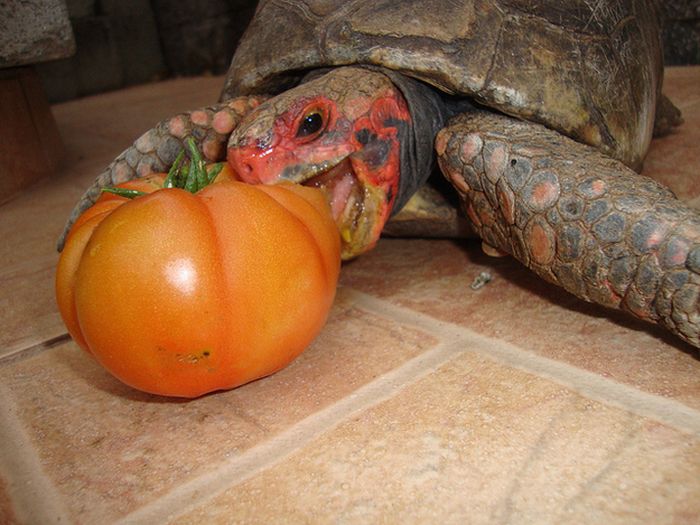|
|
Eating Turtle
|
The largest living chelonian is the great leatherback sea turtle (Dermochelys coriacea), which reaches a shell length of 200 centimetres (6.6 ft) and can reach a weight of over 900 kilograms (2,000 lb). Freshwater turtles are generally smaller, but with the largest species, the Asian softshell turtle Pelochelys cantorii, a few individuals have been reported up to 200 centimetres (6.6 ft). This dwarfs even the better-known alligator snapping turtle, the largest chelonian in North America, which attains a shell length of up to 80 centimetres (2.6 ft) and a weight of about 60 kilograms (130 lb). Giant tortoises of the genera Geochelone, Meiolania, and others were relatively widely distributed around the world into prehistoric times, and are known to have existed in North and South America, Australia, and Africa. They became extinct at the same time as the appearance of man, and it is assumed that humans hunted them for food. The only surviving giant tortoises are on the Seychelles and Galápagos Islands, and can grow to over 130 centimetres (51 in) in length, and weigh about 300 kilograms (660 lb).
The largest ever chelonian was Archelon ischyros, a Late Cretaceous sea turtle known to have been up to 4.6 metres (15 ft) long.
The smallest turtle is the speckled padloper tortoise of South Africa. It measures no more than 8 centimetres (3.1 in) in length and weighs about 140 grams (4.9 oz). Two other species of small turtles are the American mud turtles and musk turtles that live in an area that ranges from Canada to South America. The shell length of many species in this group is less than 13 centimetres (5.1 in) in length.
|
|









